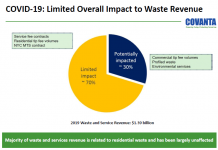by Debra Fiakas CFA
The first thing we think about Brazil in the context of alternative energy is sugar cane and ethanol.
In the last growing season Brazil producer 596 million tons of sugar cane, a feat that secured Brazil’s position as the largest sugar cane grower in the world. About 55% of the crop was used to producer ethanol and the balance ended up as sugar. Brazil’s sugar cane industry association has predicted that despite a severe drought, the 2014-2015 growing season will be even more productive with expected sugar cane production in the range 632 million tons to 636 million tons. About 40% of Brazil’s sugar cane is produced by a highly populated group of independent farmers.
Investors are perhaps more interested in the processors. The three largest processors in Brazil include Cosan Ltd (NYSE:CZZ), Sao Martinho and Acucar Guarani.
Like many of the other sugar cane processors Cosan is integrated backward in to sugar cane growing and as well as forward into ethanol production. Cosan controls the world’s largest sugar cane processor Raizen, SA in a partnership with Royal Dutch Shell. Riazen has a capacity to crush as much as 65 tons annually, but only reached 62 million tons in the 2013-2014 growing season. That represents approximately 10% of Brazil’s sugar cane crushing capacity. The company earned $4.5 billion in sales in the last twelve months, representing 15.7% growth over the prior year. Cosan earned a 3.2% net profit during the year.
Raizen is expected to benefit from government support for ethanol production. The Brazilian national development bank recently announced major financing package for the construction of Raizen’s cellulosic ethanol project in Sao Paulo state. The plant is apparently designed to rely on Iogen’s cellulosic ethanol technology and is estimated to require US$90 million for construction. Raizen management has bragged that within ten years it will have as many as eight plants producing advanced ethanol. Already the company has pledged to invests US$7 billion to increasing sugar cane crushing capacity by 50% or 100 billion tons.
Cosan trades on the NYSE under the symbol CZZ and has been on a long-term downward journey since the beginning of last year. That has left the stock trading at 11.4 times forward earnings. Before investors jump to buy these seemingly cheap shares, it is well to look at the long-term and short-term character of the stock’s trading. The stock has been attempting something of a seasonal recovery over the past month as the company has just released its financial results for the year ending March 2014, which coincides with the last growing season. The upward trend appears to be proceeding with some strength, but it might be prudent to wait for the stock to take a bit of a breather before loading up for a long position.
Debra Fiakas is the Managing Director of Crystal Equity Research, an alternative research resource on small capitalization companies in selected industries.
Neither the author of the Small Cap Strategist web log, Crystal Equity Research nor its affiliates have a beneficial interest in the companies mentioned herein.








